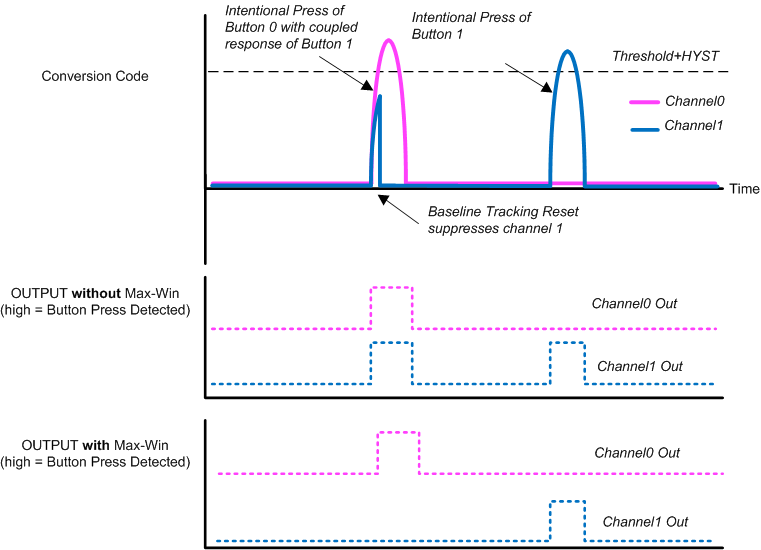SNOA993A June 2018 – July 2021 LDC2112 , LDC2114 , LDC3114 , LDC3114-Q1
7.1 Max Win
Max-Win is a useful algorithm which can be used when significant positively-correlated mechanical cross-talk is present in the system. This algorithm can be used on any subset of buttons, but is only effective if there are 2 or more enabled channels. This algorithm behaves identically in both Low Power Mode and Normal Power Mode. Note that this algorithm only modifies the assertion of the OUTx pins and the OUTx field; although the baseline tracking reset it performs will affect subsequent samples.
 Figure 7-1 Max-Win functionality
Figure 7-1 Max-Win functionalityTo use Max-Win, set the desired MAXWINx fields to 1. As this algorithm uses the post-gain value, adjusting the Gainx value affects the performance of this operation. The algorithm compares all enabled buttons with MAXWINx enabled that have net code exceeding the threshold. In the case of an equal net value across 2 or more channels, the lower indexed channel dominates (e.g. channel 0 will suppress channel 1). Any suppressed channels have their baseline tracking value updated to the current setting.
This algorithm can also be used to inhibit up to 3 channels with a reference sensor which has a higher Gain Factorx. By constructing the reference sensor in a manner which it is sensitive to extreme torque or twist events, false button actuations can be suppressed.